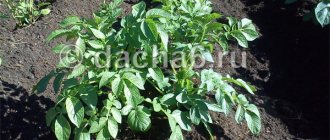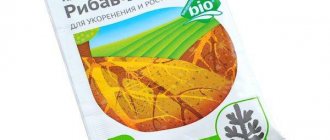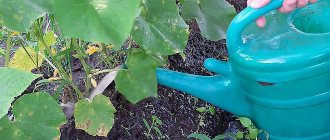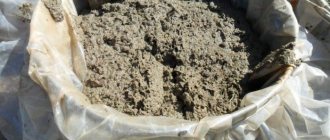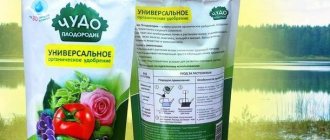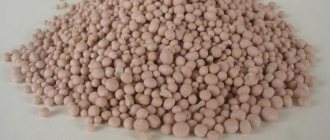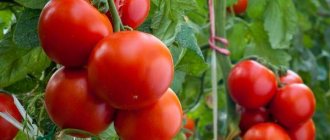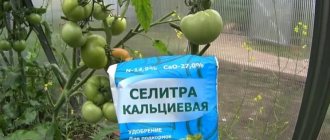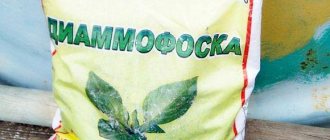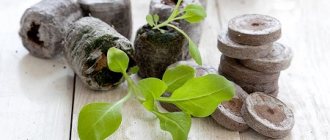Methods for applying chicken manure
Do not forget that chicken manure itself is toxic.
Peat, straw or sawdust will help neutralize this effect on tomato seedlings. Compost should be prepared from these components. To do this, a site for fertilizer is prepared on a hill. First of all, lay out a layer of sawdust. After this, you need to lay a thick layer of chicken manure on them (up to 20 cm). Then they lay out sawdust again, and another layer of droppings. The compost should stand for a month and a half, after which it is used to fertilize tomatoes. Important! Of course, compost can have an unpleasant odor. In order to muffle it, the pile is covered with a layer of earth and straw.
To prepare the solution, use both dry and fresh poultry manure. In this case, it is necessary to strictly follow the proportions. Exceeding the amount of droppings in the solution can burn the roots of the plants. So, 1.5 kg of chicken manure is dissolved in 10 liters of liquid. Immediately after this, you can water the tomatoes with this nutrient mixture. To water 1 bush, 0.7–1 liter of liquid will be enough. It is best to water tomatoes with diluted manure during rain or immediately after watering with plain water.
Some gardeners prefer to use an infusion of chicken manure to fertilize tomatoes. To do this, mix the following components in the following proportions:
- 1 liter of water;
- 1 liter of dry or liquid chicken manure.
To prepare this infusion, you should choose a container that has a lid. The prepared solution, unopened, should be stored in a warm place for several days. During this time, the fermentation process will occur. Immediately before use, the infusion is diluted with water in a ratio of 1/10. This infusion can be stored for a long time, so having prepared it once, you don’t have to worry about fertilizers for tomatoes all summer.
Bird droppings are often used in dry form for feeding. In this case, fertilizer is applied to the soil during digging. It is best to do this in the fall, immediately after cleaning the beds. Experienced gardeners lightly moisten the manure before feeding and then scatter it over the entire surface of the soil. To distribute the fertilizer more evenly over the ground, it can be leveled using a rake. You can add a little ash, sand or compost to the litter. The fertilizer is left in this form until spring. It will rot thoroughly under the snow, and already in March you can start digging up the beds.
Not everyone has natural chicken manure. In this case, you can purchase granular fertilizer at a specialty store. This litter is much more convenient to use, and it also has the following advantages:
- no unpleasant odor;
- there are no helminth larvae and weed seeds;
- long storage period;
- it is easy to store and does not take up much space;
- The granules increase significantly in volume when immersed in water.
This fertilizer is applied at a rate of 100–250 grams per 1 square meter. The granules should be sprinkled with soil or the bed should be dug up after application. Of course, chicken manure will not replace all the necessary microelements. Therefore, in some cases it will be necessary to add additional potassium to the soil.
Important! Granulated droppings can also cause burns to plants. Under no circumstances should it be added to holes for planting seedlings.
Some gardeners soak chicken to obtain nutritious fertilizer. To do this, you need to fill the chicken manure with water and leave it for a couple of days. After the expiration date, the water from the container is drained and replaced with a new one. Now again you will need to leave the droppings to soak for several days. This procedure is repeated a couple more times. Thanks to soaking, all toxins and acids are removed from the droppings. It becomes completely safe. But even after this, it is not recommended to use chicken manure to fertilize plants at the roots. It can be placed in prepared furrows next to vegetable crops.
How to fertilize
Products are applied in different ways - in the form of dry and liquid fertilizers.
Dry feeding
If you want to fertilize the soil in the fall, you can use dry chicken manure. It is necessary to slightly moisten it, distribute it evenly over the bed and level it. For 5 sq.m. take 3-5 kg. Experienced gardeners recommend adding more sand or wood ash. The bed is left in this form until spring digging.
To saturate the soil with useful substances, bird manure is scattered over the garden bed in the spring. After this, the soil is dug up, introducing fertilizer deeper. Use dry compost or granulated chicken manure.
To make compost, chicken manure is placed on a bed of garden scraps, leaves and grass. Due to the fact that methane is released from bird excrement, the temperature of the heap will be high and the processing process in it will take place very quickly. The pile should be laid in the fall. Then, before spring, urea will come out of it, as ammonia will evaporate. For 1 sq.m. take 3.5 kg of this product.
You can alternate layers of compost with horse manure, then the pile will not dry out for a long time. The fertilizer will ripen in 1.5 months, if it is not compacted too much. Otherwise it will take about 6 months.
Granular litter
Granular fertilizer has many benefits
Not all gardeners have droppings of these birds at home. But it can be purchased in the form of dry granules. This tool has some advantages, namely:
- no unpleasant odor;
- does not contain weed seeds;
- no helminth eggs;
- nitrogen is not lost during storage;
- take up little space (they swell upon contact with liquid);
- help increase the yield by 2 times;
- in dry weather they release moisture to the soil;
- long shelf life;
- Suitable for all plants.
What's better? Lying droppings or humus?
Manure has several states:
- Fresh, which is only obtained from animals.
- Half rotted. Up to six months from receipt.
- After a year, it is already considered rotten.
- And after a couple of days it becomes humus.
Both extreme types are not recommended. Because fresh contains many harmful compounds, and humus loses up to 3/4 of all beneficial substances in 2 years. The latter is good to use as a source of organic matter, but as a fertilizer it is almost useless.
In average states, harmful compounds have either disappeared or become different, so they no longer have a negative effect on vegetation.
How to feed tomatoes and cucumbers with ash
Wood ash is an equally valuable fertilizer for tomatoes and cucumbers: it contains many useful elements (potassium, calcium, magnesium, phosphorus), which are so necessary for crops during growth and at the time of fruit formation. These elements are involved in the process of photosynthesis, improve metabolic processes, help your green pets absorb vitamins and regulate water balance, and help stimulate flowering and fruiting.
The composition of ash largely depends on the plants from which it is obtained. For example, ash from hardwood is rich in calcium, ash from bark and straw has more phosphorus, and ash from meadow grass is high in potassium.
There are two ways to feed your garden crops with ash - dry matter or infusion. Dry ash is scattered by the handful into the holes when planting seedlings of tomatoes and cucumbers. To prepare ash infusion, pour 10 tbsp. ash 5 liters of water and leave for 1-2 days, stirring the composition regularly. The consumption rate for such a nutritious infusion is 0.5 liters per bush. Any of these fertilizing can be carried out 5-6 times per season.
To prevent the appearance of diseases, dust the lower part of the shoots and the ground around tomato and cucumber plants with ash.
- Ash - what kind of fertilizer is it and how to use it correctly
Ash is not just a fireproof residue after combustion, but also a valuable microfertilizer. Our material contains everything about how ash is useful for plants, how to use ash as a fertilizer, how to dilute ash for feeding, what spraying with an ash solution is...
How many times per season should you feed?
Since orderliness when applying fertilizers is very important, there is a special scheme for fertilizing tomatoes. In general, it represents five main stages that are inextricably linked with the stages of tomato development.
When planting in the ground
By the time the tomatoes are planted, the planting site must be prepared and filled with organic and mineral fertilizers. It is impossible to achieve high yields of this crop on poor and depleted lands.
For good survival and further development of tomatoes, the NKP complex - nitrogen-, potassium- and phosphorus-containing fertilizers - must be added to the soil. If you neglect to enrich the soil composition, seedlings will develop slowly, may begin to get sick, and produce low yields.
Two weeks after landing
During this period, young tomato bushes that have already adapted to new conditions need increased nutrition for growth and development. They need a balanced feed containing three main elements: nitrogen, phosphorus and potassium, as well as microelements. Some gardeners fertilize earlier - already 1 - 1.5 weeks after planting.
During the period of growth
During the period of active growth, tomato bushes need fertilizing with nitrogen and phosphorus.
The interaction of these two elements ensures the proper development of tomatoes.
The supply of phosphorus in the required volume stimulates the accelerated development of the root system, and a sufficient amount of nitrogen in the soil helps the bushes gain green mass in a short time.
During flowering
Tomato bushes begin to bloom approximately 1.5 - 2 months after planting seedlings in open ground, and in greenhouse conditions these periods begin a little earlier.
Almost all feeding of tomatoes during flowering is aimed at fruit set. In case of deficiency of potassium and phosphorus nutrition, flowers may fall from the bushes without having time to pollinate. As a result, tomato yields will drop sharply.
During this period, it is recommended to avoid the application of fertilizers with a high nitrogen content.
During fruit set
At this time, plants especially need potassium and phosphorus, but fertilizers with a high nitrogen content should be abandoned. There are many complex preparations that can be used during this period, but organic supplements remain the safest.
During the fruiting period
The last main feeding of tomatoes is carried out to improve the taste of the fruit and their accelerated ripening. The main necessary elements for fertilizing already fruiting bushes are potassium, boron, manganese, and iodine.
When receiving such nutrition, the pulp of ripened fruits will be fleshy and sweet due to the accumulation of sugars. If you neglect this stage of the scheme, then the taste of the collected fruits may not be clearly expressed. A couple of weeks before harvesting, all fertilizing should be stopped.
How to feed tomatoes and cucumbers with black bread
Bread fertilizer is also one of the most popular and simplest means of fertilizing. To prepare a nutritious bread mash, simply soak half a loaf of black bread (or just the remaining stale crusts) in a bucket of warm water and leave for 1-2 days. You can throw a handful or two of cut weeds into the same container.
Next, the resulting mass is diluted with water at the rate of 1 liter of fertilizer per 10 liters of water and sprayed with it on cucumbers and tomatoes.
If you leave the bread for a week in a covered container in a warm place, you will get good root feeding. To water garden plants, this “starter” is diluted with water in a ratio of 1:3. One bush should contain 0.5 liters of grain fertilizer.
You can water cucumbers and tomatoes with this safe fertilizer once every 5-7 days, starting from the formation of the ovaries and continuing until the very end of fruiting.
Bread starter is acidic and is therefore particularly suitable for alkaline soils. To neutralize the acid, you can add chalk or dolomite flour to the starter before diluting with water.
Feeding methods
Fertilizing tomatoes with chicken manure is carried out in different ways: dry fertilizer, infusions or solutions, compost. Each of these methods has certain nuances when used that need to be understood.
Liquid fertilizers
To prepare the simplest chicken solution, mix 1 part dried or fresh raw material with 20 parts water. The resulting nutrient mixture is left for 10 days at a sufficient distance from the living space for ventilation.
The finished fertilizer should have a yellowish tint. If it turns out darker and more saturated, it must be diluted with water until the desired color is obtained.
Another option for chicken raw materials is a concentrated feed, which is obtained by mixing water and chicken (dry or fresh) in equal parts. The mixture is left for several days in a warm place. To prevent the spread of the specific unpleasant smell of fermentation, the container with raw materials is sealed. Before use, the concentrate is diluted in water (1:10).
Liquid fertilizer made from chicken manure is watered between the rows of tomatoes. A positive result is observed 2-3 days after applying the product.
To rid organic fertilizer of the large amount of urea it contains, it is pre-soaked. To do this, excrement is placed in water, which is changed every 2-3 days. The procedure is done 2-3 times. The resulting composition significantly reduces the amount of toxic substances, and it becomes less concentrated.
Compost
Manure cannot be brought in fresh.
It is not recommended to apply fresh chicken manure: it can cause burns to the root system. To make it less aggressive, use this recipe:
- sawdust is evenly laid out on the garden bed;
- a layer of chicken 15-20 cm high is placed on them;
- the next layer is sawdust;
- then another layer of bird droppings is added, which is covered with a mixture of turf soil and straw;
- after 1.5-2 months the compost is ready for use.
Compost pits are also used to prepare fertilizer. To do this, droppings mixed with soil are placed in a depression prepared in advance, at the bottom of which a flooring of grass and old tops is laid. After a year, the rotted product is mixed with peat chips, sawdust and straw.
The mixture is used to feed tomato bushes that are grown in greenhouse conditions or in open areas.
To reduce the foul odor that comes from the compost pit, cover its surface with straw or earth.
Dry fertilizer is applied in the fall, scattering it over the area, after which the soil is dug up. It is recommended to first moisten the chicken with water.
Method for accelerating fermentation
Recently, products have appeared on the modern agricultural market that significantly accelerate the fermentation processes of nutrients. Today they can be purchased at any gardening store, whereas previously they were used only by large poultry farms.
The essence of speeding up the preparation of chicken fertilizer is to place special trays under the bird cages. The excrement that regularly appears in them is sprinkled with sawdust, which is pre-treated with a fermentation accelerator.
The mixture is piled up in layers until its height reaches 1-1.5 m, after which the future fertilizing must be poured generously with the accelerator again. It is left for a month in the summer, and for 2 in the winter. After this time, the fertilizer will be ready for use.
Chicken manure in granules
Those gardeners who do not have poultry on their farm can purchase chicken manure in the form of dry granules in specialized stores. Among the advantages of this type of feeding are the following:
- the fertilizer does not have an unpleasant odor;
- thanks to preliminary special treatment, the fertilizer does not contain weed seeds and helminth eggs;
- during long-term storage, the granules do not lose the original amount of nitrogenous substances;
- their rational use makes it possible to increase the yield of tomatoes by 1.5-2 times;
- can be used to fertilize not only tomatoes, but also other vegetable crops.
Mode of application
Manure granules are applied to the soil at the rate of 150-300 g per 1 m² in dry form or pre-soaked in water. The fertilizer is distributed over the surface of the soil, after which it is sprinkled with a small amount of soil.
Advantages and disadvantages of fertilizer
The benefits of using chicken manure include the following:
- contains all the necessary microelements for the normal growth and development of tomatoes at all stages of the growing season;
- unlike mineral fertilizers, it is not quickly washed out of the soil;
- after application to the soil it has a positive effect for another 2-3 years;
- improves the structure and composition of the soil;
- restores soil microflora;
- due to the content of a large amount of lime, it reduces the acidity of the soil;
- environmentally friendly and safe;
- plants fed with this fertilizer have increased resistance to diseases and adverse environmental conditions;
- significantly accelerates the ripening of tomatoes on the bush;
- when applied correctly, it increases the yield of tomatoes by 40%;
- does not burn the root system of plants;
- widely available, cheap and easy to use.
In contrast to such a huge number of advantages, this natural fertilizer has some features and disadvantages:
- fresh is not suitable for application to the soil, but can only be used for preparing infusions or solutions;
- if birds are kept improperly, they can be a source of diseases such as: E. coli and salmonellosis (poses a danger to humans, not to tomatoes);
- application without following standards can lead to the accumulation of nitrates in tomatoes;
- not suitable for feeding tomato seedlings due to the uric acid content;
- when heated, it emits an unpleasant odor due to the content of ammonia and hydrogen sulfide, so manure should be stored away from residential premises.
- not suitable for organizing warm beds for tomatoes, since ammonia has a depressing effect on plants.
In what form it is used and methods of application
Chicken manure can be used both fresh and processed. Based on it, you can prepare a nutritious compost mixture and various liquid solutions and infusions. Today, chicken manure in granules is available on the shelves of gardening stores, which is very convenient for gardeners whose plots are located far from farms. Each type and method of use has its own characteristics, which every vegetable grower should know about.
How to use fresh droppings
compost
It will take about a month and a half for the destructive substance to turn into useful fertilizer. To make compost you will need sawdust. On an elevated area or in a special container, lay out a layer of sawdust as the first layer, a layer of droppings on top of it, and more sawdust on top. The height of the layers should be approximately the same. In order to hide the unpleasant odor, the compost heap can be covered with straw or a layer of soil. After 40-60 days, you get ready-made fertilizer for tomatoes. It can be used both in autumn and spring. The dry mixture is distributed in a layer of about 3-5 cm over the area and dug up.
plant nutrition solution
When preparing the infusion, the proportions must be strictly observed. Add one kilogram of fresh chicken manure to a ten-liter bucket of settled water, mix everything thoroughly until the manure is completely dissolved. The resulting nutrient mixture is used immediately after preparation. Consumption rate per plant – one liter
It is important to remember that liquid fertilizers can be applied only on well-moistened soil, that is, after heavy rain or high-quality artificial watering
Important information!
Adding fresh manure without processing is possible only in the autumn when digging up beds for tomatoes, which will only be planted next year. During the winter, the droppings will have time to rot well and will be an excellent fertilizer for nightshades.
How to use dry litter
This fertilizer should be stored in well-ventilated wooden boxes. It can be used either as a crushed addition or for preparing infusions.
In its pure form, dry fertilizer is applied for digging at the rate of 100 grams per square meter. To prepare the infusion, the litter is diluted in a ratio of 1:20 and infused for two days. For one adult plant, 700 ml of liquid fertilizer is enough.
How to prepare and use liquid fertilizer
Infusion of droppings with nettles
Fresh chicken manure is diluted in a barrel or other convenient container in a ratio of 1:15. Then crushed leaves and stems of young nettle are added to half the volume of this container. The container is protected from precipitation and left for 5-7 days. One tomato plant uses half a liter of infusion.
Infusion with iron sulfate
A ten-liter bucket of manure and 300 grams of iron sulfate are added to a two-hundred-liter barrel of settled water. Liquid fertilizer will be ready for use in 10-14 days. Iron sulfate will get rid of the unpleasant odor and serve as an additional fertilizer.
Important information!
The application rates for chicken manure are 20–30 times less than for cow or horse manure.
When can you fertilize tomatoes with chicken manure?
If fertilizers were not applied in the fall or the soil is too depleted, then dry chicken manure can be added directly to the planting holes. The application rate is 100 grams per square meter.
After three weeks, it is necessary to evaluate by the appearance of the tomatoes whether the first feeding is required. If the plants have strong stems and rich green leaves, then fertilizing will be unnecessary. This can lead to overfeeding and fattening. If by this time the bushes look rather weak and the leaves begin to turn yellow, this is a sure sign of nitrogen deficiency. In this case, carry out the first fertilizing with any liquid fertilizer.
In the future, it makes sense to fertilize only for tall varieties of tomatoes, since they have a long growing season and, accordingly, they require a lot of energy for growth, flowering and fruiting at the same time. There is no point in feeding determinate tomatoes throughout the season, since they quickly gain the required green mass at the very beginning of the season.
Deadlines for depositing
Most agronomists agree that feeding tomatoes with chicken manure should be done about 3 times in one season, namely:
- the first time - during the period of transplanting tomato seedlings into the ground;
- the second time - during the period when the plant begins to flower. If the plants have a healthy appearance, a bright, rich green color and strong stems, this feeding can be skipped so as not to oversaturate the tomatoes with microelements;
- the third time - during the fruiting period.
Important! If the condition of the soil for growing tomatoes requires it, fertilizing can be done during the autumn digging of the soil.
Benefits of feeding chicken manure
Numerous scientific studies have proven the usefulness of feeding chicken manure:
- In terms of the composition of microelements, chicken droppings are the richest compared to other excrements (mullein, horse, pig manure, etc.);
- Fertilizing is quickly absorbed, useful elements are retained in the soil for several years;
- The effectiveness of fertilizing is manifested in a forty percent increase in yield;
- Due to the presence of copper and iron, plants become more resistant to bacterial and fungal diseases (for example, root rot, scab, late blight, etc.);
- Chicken manure is slightly alkaline, which helps to grow plants in acidified soil. The PH level of chicken manure varies between 6-8, it depends on the diet of the birds and the level of rotting of the manure (the longer the rotting process, the correspondingly greater the amount of alkali released);
- The fertilizer is fireproof, non-toxic;
- After feeding, plants, bushes and trees can more easily withstand dry periods;
- Flowering and fruit set improves, and positive changes are visible from the first year of use and persist for several seasons;
- Fertilizing does not burn the roots of the plants, but the dosage should be adhered to;
- The ripening time of fruits is reduced, the harvest becomes rich in proteins and vitamins;
- The properties of the soil are improved (a humus layer is laid);
- Inexpensive feeding, and if you have your own farm, it’s completely free.
Precautionary measures
In order not to oversaturate the tomatoes with useful substances from fertilizing with chicken droppings, you need to carefully monitor the condition of the plants after the fertilization procedure.
Important! If the tomato bushes have begun to grow their green mass too actively, their stems and leaves have become thicker than usual, the feeding procedure must be stopped, since all the vitality of the plant will not be spent on fruiting, but on maintaining the viability of the green component.
In the event that such an undesirable effect was nevertheless achieved from carrying out such fertilizing, the use of ash infusion will help normalize the current situation.
In addition, you should remember the fact that this fertilizer belongs to the organic group. If you use poultry manure, you must carefully monitor its health and create the right conditions for its life. Otherwise, keeping chickens in conditions that do not meet the requirements of sanitary standards, or improper organization of their feeding, can cause E. coli or salmonellosis to appear in the bird's droppings, which can easily enter the human body after eating a ripened crop that was previously fed such “contaminated” manure.
Types of Manure Fertilizers
Before using chicken manure, it is necessary to assess the condition and nutritional value of the soil, its acidity. This helps you choose the right consistency and type of fertilizer. In dense soil with a high clay content, it is better to add a dry substrate, which will add looseness when decomposed.
If the soil is devoid of minerals, it is recommended to use fertilizer that has lain for 2-3 months after collection in the chicken coop. Many microelements interact with oxygen in the air and turn into light compounds. They are better and faster absorbed by the roots, allowing you to feed cucumbers less often. In the greenhouse, a composition based on chicken excrement normalizes the microflora to an optimal level.
Ammofoska fertilizer: composition, instructions for use, reviews Ammofoska is a time-tested substance that has been used in suburban areas for decades. A drug…
Homemade chicken manure
Seedlings or adult cucumbers can be fed with chicken droppings obtained from a personal poultry house. It’s easy to prepare useful fertilizer at home without special skills and knowledge:
- Freshly harvested product should not be used in its pure form, so as not to spoil the roots. The excrement is poured with plain water in a 1:1 ratio and left to ferment for 7 days. After the process is completed, dilute it in a separate bucket at a concentration of 1:20, and carefully water the beds with the resulting solution.
- If it is necessary to preserve concentrated fertilizer until spring, the waste product is laid out on iron sheets. They are dried in the sun and rubbed through a metal mesh. The resulting powder can be left in a bucket with a lid or a plastic container.
Important! When processing fresh or dried litter at home, you must be careful: it can provoke the development of an allergic reaction in humans
Granular bird droppings
Fertilizer in the form of granules is produced by large manufacturers of agrochemicals. The composition may contain additives in the form of wood ash, phosphorus, mullein or straw. Therefore, before purchasing, you need to study the packaging and main components. The industrial product is easy to dose and apply to the soil.
The granules are produced by drying and pressing fresh raw materials, so the minerals are fully preserved. Under the influence of treatment, pathogenic bacteria and pest larvae die. The product is easily diluted in water in a ratio of 1:3. They can be used to water seedlings or cucumber bushes during fruiting. When applying to loosened soil, it is necessary to adhere to a dosage of 1 kg of product per 1 square meter. m plot.
Compost
Most farmers prefer to use chicken manure compost. To prepare it, you need to dig a shallow hole. It should be filled with straw, food waste, chicken droppings with the addition of mullein, and litter from the poultry house. The last layer is peat, which stimulates fermentation by generating heat. The components rot over several months.
The best way to use compost is to add the composition to the soil after harvesting and digging for the winter. After the snow melts, the soil is well saturated with moisture, and microelements are evenly distributed to a depth of 30 cm. This prevents damage to the roots by ammonia.
Application. Recommended Dosages
Fertilizer can be applied to the soil directly in granules or in the form of a solution.
You cannot use a solution of chicken manure for foliar feeding. The easiest way is to scatter the granules evenly over the surface of the soil and lightly mix it with the top layer.
Norms for winter application:
- to increase soil fertility - 0.7-0.9 kg/m2;
- for potatoes - 0.5-0.7 kg/m2;
- for vegetables - 0.5 kg/m2.
Upon landing:
- cucumbers, peppers, tomatoes, eggplants (in one hole) - 10 g;
- greens and onions for turnips - 100 g/m2;
- beets, carrots - 150 g/m2;
- berries, flowers - 100-200 g/m2.
For the solution, take two tablespoons per ten-liter bucket of water.
For autumn feeding of the garden, 0.4-0.5 kg is scattered around the tree trunks.
Do you use chicken manure as fertilizer?
Not really
How to fertilize with dry granules
Litter pellets - concentrate. After spreading over the surface, they should be lightly covered with earth.
Important! Fertilizer should not come into direct contact with plant roots.
This method is long-lasting, as it provides nutrition to the plants for several months as the granules decompose. To get more yield, during the period of fruit formation and fruit filling, it is better to additionally apply potassium fertilizers, for example, potassium chloride (20 g/m2), potassium sulfate (30 g/m2) or any other, as foliar fertilizers.
How to fertilize with a solution
To prepare the solution, you usually take 300-500 g of granules per ten-liter bucket (the specific rate is indicated on the packaging). The granules dissolve in water and infuse for a day. Water the plants well before fertilizing.
The solution should be watered carefully - at the root, so as not to get on the leaves. Norms and deadlines:
- cucumbers, peppers, eggplants, tomatoes - from 0.5 to 1 liter of solution per plant (depending on its size and planting density);
- trees and shrubs - from five to seven liters per square meter. m of trunk area, carried out in the first half of the growing season;
- strawberries - from seven to ten liters per four linear meters. It is applied in the spring into the furrows between the rows. A possible option is in the spring and after harvesting. In this case, you should take half the specified fertilizer rate.
For which plants and vegetables is bird droppings contraindicated?
The saturation of bird droppings with nitrogen makes it unsuitable for feeding plants sensitive to high levels of compounds of this element.
These include primarily plants of the coniferous and heather families:
- blueberry;
- blueberry;
- heather;
- thuja;
- spruce;
- pine;
- fir;
- juniper, etc.
There is also no need to fertilize rhododendrons and camellias with bird manure.
Goose and duck droppings have a very good organic composition, since these birds are waterfowl and their feeding pattern includes various aquatic vegetation, which has a positive effect on the amount of useful elements. Alas, this type of litter is almost impossible to purchase in the retail chain.
Advice from experienced summer residents
To avoid making the mistakes of most beginners, use the useful advice of experienced summer residents:
- Do not fertilize cucumbers with fresh chicken feces. The concentration of uric acid in them is high and can burn the root system. Apply fertilizer only in the form of weakly concentrated solutions;
- chicken droppings have a very unpleasant pungent odor. To get rid of it, leave the droppings in the open air for a while so that the smell disappears;
- If, when applying fertilizer, the solution gets on the leaves of cucumbers, immediately wash them with water so that they do not get burned;
- Collect chicken droppings along with straw or hay and store in buckets or bags. If you want to keep it for a long time, get a special box.
How to prepare liquid fertilizer?
Fermentation
Large poultry farms process excrement in this way. But now it has become available to private owners, with the availability of special preparations for accelerating fermentation, which has significantly simplified the process of preparing fertilizer from bird droppings.
This method is based on the idea of chemical catalysis of organic substances. It is implemented using fairly simple methods. A special tray is placed under the cage with birds, in which processed waste products of birds accumulate. Sawdust, pre-treated with a fermentation accelerator, is periodically added to the pile. When cleaning the tray, all components are mixed and placed in a pile. When it reaches a height of 1-1.5 meters, it is once again additionally watered with an EM or UV accelerator.
After this, the resulting mixture is kept outside for 30 days (in summer), and twice as long in winter (at low temperatures the rate of decomposition reaction slows down). The dried substrate can be used immediately; it does not contain eggs of chicken helminths, weed seeds, and does not smell.
Infusion
This fertilizer received very high marks from gardeners. It acts quickly, as it contains a lot of nitrogen, and if you water plants with it as a top dressing, the result becomes noticeable within a couple of weeks.
It cooks quickly. Rotted bird manure is poured with water, mixed, and left for 2-3 days. The color of the resulting mixture should be like that of very weakly brewed tea. If the shade is richer, then the infusion of chicken manure must be diluted to the required concentration.
Soaking
Sometimes bird droppings are soaked to get rid of excess acid that is harmful to plants. To do this, it is filled with water for two days, then it is drained and fresh water is added. The soaking procedure is repeated several times. During the reaction with H2O, excess toxins and uric acid are removed from this highly concentrated organic fertilizer.
After completion of processing, the resulting substrate can be fed to the plants, but not at the root, but by burying manure in the grooves around the tree trunk, or in the inter-row spaces.
Reviews from gardeners
Olga, Lutsk
Yes, I also made mash from chicken manure while the chickens were there. If my memory serves me correctly, a kilogram of droppings per bucket of water, leave for a couple of weeks. Then we dilute a glass of this chacha in a bucket of clean water and give a liter under the bush, then pour more on top.
Source: chudo-ogorod.ru
Alexander, Gomel
Precautionary measures: litter must be from healthy birds without salmonellosis and other diseases. Work with gloves and special clothing. Wash your hands with soap and for a long time. While working, do not drink, smoke, or touch other objects with dirty hands.
Source: dacha.wcb.ru
Rotted droppings and humus - which is best for tomatoes and cucumbers
Litter or manure has several stages of decomposition:
fresh – immediately after receiving from birds or animals;
half-rotted – up to 6 months after receipt;
rotted - a year later;
humus - one and a half to two years.
Fresh matter and humus are two extremes. They are not recommended for use. As already mentioned, the first is too concentrated, and the second is more likely to be plant residues that require disposal in the soil, since the nutrient content decreases by 75% in two years.
Humus is used to enrich the soil with organic matter, but as a fertilizer, this substance is of no value.
The most useful substances are semi-rotted and rotted chicken droppings. The bacteria in it have already begun working on processing organic matter and some of the harmful substances have evaporated or passed into another state, so such fertilizing is not dangerous for the roots of young seedlings.
The amount of nutrients in rotted droppings is 50% lower than the original, and in half-rotted droppings is 25% lower. Therefore, they are complete sources of nitrogen, potassium, phosphorus, as well as microelements.
Properties and composition of chicken manure
Bird droppings contain up to 70% water. Because of this, it is classified as a cold species, just like cow and pork. These species take longer to decompose in the soil and gradually release nutrients.
It is believed that after adding chicken manure to the soil, the soil does not need to be fertilized for 3 to 4 years. This does not mean that you cannot use mineral fertilizers, especially chelated ones. But organic matter is really enough for 3 years.
The advantage of chicken manure is its high nitrogen and phosphorus content, which cannot be said about mullein. There are almost 4 times more battery data. Microelements - boron, magnesium, sulfur and calcium - have a positive effect on immunity, metabolism in plants, and also accelerate the ripening of fruits.
Chicken manure can be stored in liquid form, which is also convenient. High concentrations of active substances do not allow it to ferment; you can take the mother liquor and dilute it with water for irrigation at any time.
This is theoretical, but practically nitrogen components are necessary during the active growth of green mass, that is, in the spring
Further, nitrogen nutrition does not play an important role, because the turn of flowering comes and the main garden crops - cucumbers, tomatoes and potatoes - need potassium and phosphorus
What is the benefit
Bird droppings have a unique chemical composition, similar to some ready-made mineral fertilizers. In addition to the high nitrogen content characteristic of all types of manure, chicken manure contains many other important microelements that have a positive effect on the growth and development of tomatoes:
- potassium;
- potassium oxide;
- phosphorus;
- phosphoric acid;
- calcium;
- magnesium;
- lime.
In addition, manure from “domestic birds” includes such rare microelements as:
- copper;
- zinc;
- sulfur;
- manganese;
- cobalt.
The peculiarity of chicken manure is that all these substances are contained in it in a form that is easily digestible for tomato plants.
Organics for plants: benefits and harms
Organic matter enriches the soil and serves as food for soil bacteria, which process plant residues and release humic acids into the soil. Nutrients become available and easily absorbed by plants.
Various organic substances are used for garden crops - mullein, horse or bird droppings, green manure. There is only one effect: the soil improves its chemical and physical properties, becomes loose and retains water well. This protects the root system from drying out and nutrient deficiency.
Manure can be harmful in the following cases:
if it was introduced fresh in the spring, just before planting;
if it is infected with weed seeds;
contains helminth larvae or harmful insects.
Fresh organic matter, especially chicken manure, releases methane as it decomposes. This is what poses the main danger to the root system. Chicken manure contains a lot of ammonia, which also inhibits crop growth.
You cannot apply manure before flowering, because nitrogen substances prolong the growing season and instead of flowers and ovaries you can get tall, dense bushes of tomatoes and cucumbers. There is a time for everything and you need to know whether it is possible to feed cucumbers with chicken droppings just before flowering, or is it better to wait until autumn and do everything right.
Tomatoes are nitrogen lovers, but they don’t like fresh fertilizer. The same goes for potatoes and strawberries.
Litter storage
Chicken droppings can cause significant damage to plants. To minimize the risk of side effects from its use, it is necessary to properly store this natural material. It's no secret that it dries out very quickly due to loss of moisture. In dry form, fertilizer will not bring any benefit. Following storage rules will help protect it from such a problem. To save the material from drying out, it is enough to sprinkle it with peat or make compost based on it.
To avoid drying out, chicken manure can be mixed with peat.
Is it possible to feed chicken tomatoes in a greenhouse?
To plant tomatoes, it is advisable to use fermented chicken rather than fresh chicken. Thanks to it, the beds have a warming effect and help tomatoes planted in the greenhouse to withstand spring frosts.
How to properly prepare a warm bed in a greenhouse:
- This is done in the fall.
- A layer of soil is removed from the tomato beds and natural insulation is spread: straw, sawdust, spruce paws or pine needles.
- 8-12 cm of fresh manure is laid on top and covered with removed greenhouse soil.
- Watered.
- Cover with plastic wrap.
Tomatoes can be planted in such beds earlier than usual.
Step-by-step preparation of liquid solution
| Stage 1. Prepare everything you need |
You need a large container or several containers if they are small . Approximately half the volume of dried chicken manure is poured into them; this is the best option.
Fresh litter must be pre-prepared, as it contains a high content of uric acid . To do this, place it in the sun for several days so that the acid evaporates faster. Then the droppings are soaked - water is poured in, which is changed to clean water 3 times with an interval of 12 hours. After this, the litter can be used
Fill the containers with warm water to the top . Close the containers with lids and place in a warm, shaded place for fermentation.
Check the process periodically . Usually fermentation ends after 2 weeks, but the process can last longer. After this, the composition is ready for use
Mix the contents of the container well . Work in a respirator, as the smell is not the most pleasant.
Pour into a bucket or other container . Since fertilizing cucumbers and other vegetable crops requires a low concentration, the proportions are 1 part litter to 30 parts water. That is, 300 ml of concentrate is poured into a 10-liter bucket
Use fine ash from burning wood and grass residues . The norm is about a glass per bucket of solution.
Ash increases the content of beneficial microelements and serves as a means of preventing pests . But most importantly, it makes the smell much weaker
Pour clean warm water into the mixture of droppings and ash . Fill the bucket until full and mix all ingredients well.
It is better to dilute the composition immediately before use . It can no longer be stored in this condition.
Before fertilizing, cucumbers must be watered . Or you can carry out work after it rains.
Water as usual to thoroughly saturate the soil . This reduces the risk of burns and accelerates the absorption of nutrients.
Fertilizing tomatoes with organic fertilizers
Manure reduces soil acidity due to its high calcium and magnesium content, and potassium and magnesium are found in the most suitable simple form for tomatoes. Manure releases a large amount of carbon dioxide, which is necessary for the process of photosynthesis. Types of manure used to feed tomatoes:
- Horse - the most suitable for culture, ideal for planting in greenhouses and hotbeds;
- Cow - used for all types of soils, decomposes for a long time;
- Sheep and goat - capable of saturating plant roots with nutrients for a long time, the most effective.
- Pork - most often used in greenhouses, effective when spring comes.
- Rabbit fertilizer is similar in effect to horse fertilizer, but difficulty arises in finding the required volume of fertilizer, since there are few large farms.
- Chicken manure is extremely healthy and rich in potassium, magnesium, and phosphoric acid. Having fertilized the soil once, no fertilizing will be required over the next few years.
Chicken manure mixed with straw
It is worth remembering that solutions based on chicken manure should only be used for application at the roots of plants.
